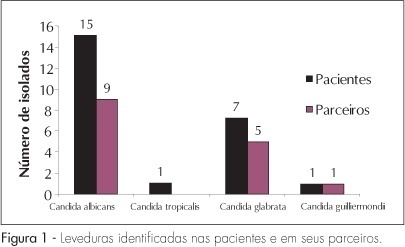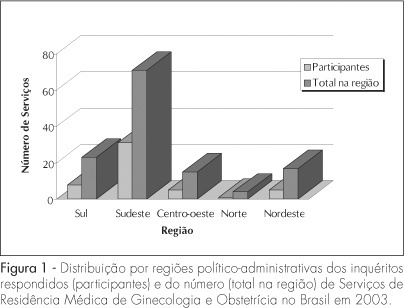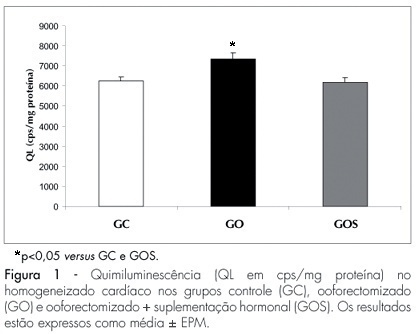Summary
Revista Brasileira de Ginecologia e Obstetrícia. 2007;29(3):120-125
DOI 10.1590/S0100-72032007000300002
PURPOSE: to present a surgical technique for patients submitted to caesarean section, which evolves to medicine refractory hemorrhage. METHODS: a case report study, of which the including criteria were failure in the pharmacological treatment to control post-partum hemorrhage, and the patients' request to preserve their uterus. Four patients submitted to caesarean section which evolved to immediate post-partum hemorrhage, refractory to the use of ocytocin, ergometrine and misoprostol, were treated with the suture technique described by B-Lynch, without modification. The uterus was transfixed in six points according to the standard procedure, with chrome catgut-2 or polyglactine-1thread. After the assistant's manual compression of the uterus, the thread was pulled by its extremities by the surgeon, and a double knot followed by two simple knots were applied before performing the hysterorraphy. RESULTS: needled chrome catgut-2 thread was used in three cases and needled poluglactine-1 in one case. In the four cases there was immediate discontinuity of the vaginal bleeding, after the suture. The four patients did not present any complication during the procedure or along the immediate and late puerperal period. CONCLUSION: this technique represents a surgical alternative to deal with post-partum hemorrhage and may represent a reduction in the maternal morbidity and mortality in our country.

Summary
Revista Brasileira de Ginecologia e Obstetrícia. 2007;29(2):80-84
DOI 10.1590/S0100-72032007000200004
PURPOSE: to relate yeasts identified by laboratory tests to clinical signs and symptoms in patients with vulvovaginal candidiasis, and to investigate the importance of the sexual partners in the recurrence of the infection. METHODS: from July 2001 to July 2003, a sample of 179 patients aged from 18 to 65 years old, with clinical suspicion of fungal vaginitis were analyzed in a prospective study in Great São Paulo. Exclusion criteria included: pregnancy, impaired intrinsic or extrinsic immune response (including Aids), diabetes or immunosuppression; patients undergoing corticosteroid, antibiotic or hormone therapy, in post menopause, with intrauterine device (IUD) or making use of vaginal douches or spemicides. Samples of vaginal and penis secretions from partners of patients with relapse of vaginitis episodes were collected for microscopy and fungal culture. Fungal colonies isolated in CHROMagar Candida were identified by classical methods. Fisher's exact t-test was used to correlate the clinical picture with the yeasts isolated from patients. RESULTS: the most relevant clinical signs and symptoms were pruritus and vaginal discharge followed by erythema and edema, statistically independent from the etiological agent. Direct microscopy revealed yeasts in 77 patients with vulvovaginitis, and 40 Candida spp cultures were obtained. Candida albicans (70%), C. glabrata (20%), C. tropicalis (7,5%) and C. guilliermondii (2,5%) were identified. The yeasts prevalent in partners were C. albicans and C. glabrata. The same species were detected in female and male sex partners in 87% of the cases. CONCLUSIONS: fungal vulvovaginitis was more frequent in women between 18 and 34 years old. No correlation was observed between the species of yeast detected and clinical symptomatology. Sexual partners are important Candida spp reservoirs and may be related to the maintenance of the vulvovaginal candidiasis.

Summary
Revista Brasileira de Ginecologia e Obstetrícia. 2007;29(2):74-79
DOI 10.1590/S0100-72032007000200003
PURPOSE: to evaluate the association between women's menstrual experience and preferred changes in their menstrual cycles. METHODS: a cross-sectional study design was used. A total of 420 women were interviewed. Participants complied with the following criteria: age (18 to 20, 25 to 34 and 45 to 49 years); schooling (<8 years and >12 years); having menstruated during the three months previous to the study. Subjects were selected in the city of Campinas (SP), in nine private and seven public health services. For data collection, a questionnaire was prepared on the basis of the results of a previous pilot study that consisted of small groups. A data bank was prepared with the information registered in the questionnaires and the analysis was carried out with SAS, version 8.2. For the statistical analysis, the Pearson chi2 test and the Fisher exact test were used to evaluate the association between variables (p<0.05). RESULTS: most subjects preferred greater than once a month intervals between menstruations. There was an association of the typical menstrual intervals experienced by women (p=0.0248) and the degree of interference of menstruation with daily activities (p=0.048) with the preferred interval between menses. However, there was no association between preferred intervals by women and the following characteristics of pain: duration, intensity and use of medication. CONCLUSIONS: the results suggest that women would like intervals longer than one month or to never menstruate.
Summary
Revista Brasileira de Ginecologia e Obstetrícia. 2007;29(2):67-73
DOI 10.1590/S0100-72032007000200002
PURPOSE: to evaluate the teaching and the practice of hysterectomy in the Brazilian regions and to compare them with data of international literature. METHODS: questionnaires about nine issues on benign hysterectomy indications, surgical procedures, use of antibiotic prophylaxis, suture of the vaginal vault and complications were sent to the 132 Gynecological and Obstetrics Residency Services of Brazil, registered by the Ministry of the Education and Culture in 2003. Data were computed and statically analyzed, with the use of the Friedman's, Kruskal-Wallis's and chi2 tests, according to the characteristics of the variables. RESULTS: 48.5% of the questionnaires were answered or justified when there were no answers, mainly in the Southeastern region (62%). The main surgical hysterectomy procedure was the abdominal, varying from 60 to 100% (p<0.001), followed by the vaginal (10 to 40%) and the laparoscopy (6%). In 94% of the cases, laparoscopy was not employed. The main indication for hysterectomy was myomatosis (60.4%; p<0.001), followed by adenomiosis (8.3%) and abnormal uterine bleeding (7.5%). First generation cephalosporin was used for antibiotic prophylaxis in 94% of the cases. There was no significant statistical difference among the threads (simple Catgut®, chrome Catgut® or Vicryl®) used for the suture of the vaginal vault and the development of granuloma in this region, which was the main complication of the procedure (p=0,002). CONCLUSIONS: the surgical procedures, the hysterectomy indications, the threads used to suture the vaginal vault and the complications were similar in the different regions of Brazil and they agreed with the evidence reported in the international literature.

Summary
Revista Brasileira de Ginecologia e Obstetrícia. 2007;29(2):96-102
DOI 10.1590/S0100-72032007000200007
PURPOSE: to evaluate the classification and the etiology of girls attended in a Pediatric and Adolescent Gynecology Clinic. METHODS: The hospital charts of 58 female patients attended from 2000 to 2005 with diagnosis of probable precocious puberty were reviewed and relevant data analyzed. Inclusion criteria were breast and/or pubic hair growth before eight years old. The girls were classified according to the clinic aspects and the supplementary exams they had been submitted to, into one of the categories: central precocious puberty (CPP), precocious pseudopuberty, premature thelarche and premature pubarche. RESULTS: from the 58 reviewed cases, 28 girls were diagnosed as CPP, one as precocious pseudopuberty, ten as premature thelarche and 19 as premature pubarche. All the cases of CPP had an idiopathic etiology, except for one girl whose activation of the ypothalamic-pituitary-gonadal axis was secondary to congenital adrenal hyperplasia. There was one case of precocious pseudopuberty due to McCune-Albright syndrome. All the cases of premature thelarche had an idiopathic etiology, except for one girl who had primary hypothyroidism. All the cases of premature pubarche had an idiopathic etiology. CONCLUSIONS: among the cases diagnosed as precocious puberty, CPP was the leading diagnosis and most cases had an idiopathic etiology. Organic causes leading to precocious puberty were infrequent.
Summary
Revista Brasileira de Ginecologia e Obstetrícia. 2007;29(2):91-95
DOI 10.1590/S0100-72032007000200006
PURPOSE: compare the outcomes verified during urodynamic investigation realized in two different positions related to urinary leak point pressure under stress and to discuss its clinical relevance. METHODS: sixty-four patients with stress urinary incontinency (SUI) aged 25-80 years old, attended, during June 2003 to September 2005 were included in this study. Patients were initially submitted to urodynamic investigation in accordance with International Continence Society (ICS) techniques in orthostatic position and just after were evaluated in seating position. RESULTS: statistical significance was obtained after evaluation of Vasalva leak point pressure (VLPP) obtained in two positions (99,8 ± 33,3 versus 102,9 ± 32,4; respectivamente, posição sentada e em pé, p<0,05). Linear regression test based on frequency analyses was applied with the purpose to verify the patient percentage allocated in confidence interval in terms of Valsalva leak point pressure in seating or orthostatic positions. A rate of 90.6% of compatibility was gotten in these results. When three unities were added to VLPP values after urodynamic investigation in seating position, it was noted that 92.2% of patients was included in this interval. CONCLUSIONS: these findings suggest that the urodynamic investigation can be realized in seating position without diagnostic a therapeutic impairment allowing higher comfort to the patients.
Summary
Revista Brasileira de Ginecologia e Obstetrícia. 2007;29(1):3-9
DOI 10.1590/S0100-72032007000100002
PURPOSE: to analyze patients with vulvovaginal candidiasis with respect to risk factors, symptomatology and results of anal culture, to identify the frequency of species of Candida albicans and non-C. albicans, and to correlate anal and vaginal colonization. METHODS: a total of 99 patients were included with suspected vulvovaginal candidiasis, from Natal, Brazil, between May 2003 and May 2005, totalling 294 collections. The clinical material, obtained by vaginal and anal swabs, was seeded on CHROMagar Candida®. The yeasts were identified using the classic method, in addition to the growth test at 42º and 45ºC and the Hypertonic Saboraud broth test. Symptomatology, risk factors and anal colonization were assessed according to positive or negative culture for Candida spp. The cultures positive for C. albicans at the two sites were compared with other results encountered. Yates’ chi2 test and Fisher’s exact test were used for statistical analysis. RESULTS: the most frequent was C. albicans in 69% of the cases. Wearing tight and/or synthetic underclothing, the presence of allergic diseases, the occurrence of itching, leukorrhea and hyperemia showed a significant association with positive culture for Candida spp in the vagina. The chance of a patient with positive anal colonization to present with concomitant positive vaginal colonization was 2.8 and 4.9 times greater for Candida spp and C. albicans, respectively. The risk of a patient with anal culture positive for C. albicans to present with positive vaginal colonization was 3.7 times greater when compared to non-C. albicans species. CONCLUSIONS: the most common species was C. albicans, and a relevant association between vaginal cultures positive for Candida spp and the use of tight and/or synthetic underclothing, allergic diseases, the occurrence of pruritus, leukorrhea and erythema was observed (p<0.05). Positive anal colonization concomitant with vaginal colonization was significant, suggesting possible vaginal contamination from the anus.
Summary
Revista Brasileira de Ginecologia e Obstetrícia. 2007;29(1):27-33
DOI 10.1590/S0100-72032007000100005
PURPOSE: to evaluate oxidative stress in cardiac tissue of ovariectomized rats, with and without hormonal therapy. METHODS: female Wistar rats were divided in three groups: control group (CG); ovariectomized group (OG); ovariectomized group with estrogen supplementation (ESG). The estrogen deprivation was done through bilateral ovariectomy. After one week from the ovariectomy, a pellet of 1.5 mg of 17beta-estradiol was implanted in the ESG animals. Nine weeks after the ovariectomy, cardiac tissue was obtained for the analysis of the oxidative stress through CL (chemiluminescence), and measurement of antioxidant enzymes catalase (CAT), superoxide dismutase (SOD) and gluthatione peroxidase (GPx). RESULTS: CL was increased in the OG (7348±312 cps/mg protein) when compared with the CG (6250±41 cps/mg protein, p<0.01), but there was no significant difference between the CG and the ESG (6170±237 cps/mg protein). Ovariectomy reduced SOD (35%, p<0.05) and CAT (22%, p<0.001) activities in the OG as compared with the CG. Hormonal therapy normalized antioxidant enzymes activities in the ESG. There was no statistically significant difference in GPx activity among the groups studied. CONCLUSIONS: ovarian hormone deprivation induced an increase of oxidative stress with reduction of antioxidant defenses in the cardiac tissue. However, hormonal therapy prevented oxidative stress after ovariectomy, probably due to an increase of the CAT and SOD activities in the cardiac muscle. These findings suggest an important oxidative stress contribution in cardiovascular dysfunctions observed in women after menopause, reinforcing the importance of hormonal therapy in the management of cardiovascular diseases risk in this group of women.
